Chilean Pavilion at Venice Architecture Biennale 2012
The Venice Architecture Biennale 2012 closes this weekend and this movie by Cristobal Palma shows how visitors to the Chilean Pavilion had to walk over a bed of salt while viewing proposals for Chile's public spaces on glowing boxes suspended from the ceiling.
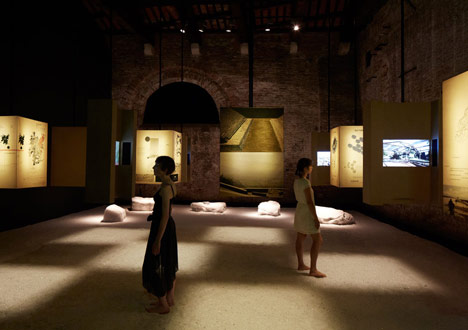
The pavilion was named Cancha, the pre-Hispanic Quechuan word for public space, to tie in with biennale director David Chipperfield's theme of Common Ground. "Cancha is the reference used to comprehend our Chilean Ground, our Common Ground which is not urban but territorial," explained curators Pilart Pinchart and Bernardo Valdes.
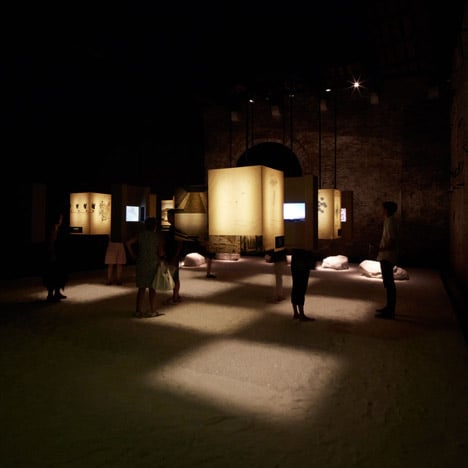
In response to this, seven architects presented concepts for public spaces in Chile as images on the hanging boxes, while Cristobal Palma produced seven short movies (shown below) to capture the essence of each idea.
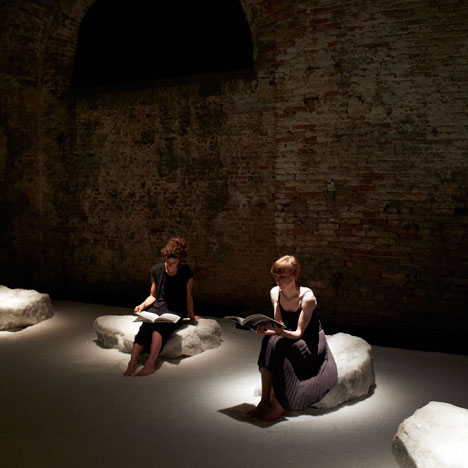
The salt crystals covering the floor of the pavilion were a nod to the salt flats of Tarapacá, which supply salt to Venice and form a tie between the two places. Roughly cut salt blocks also provided seating for visitors.
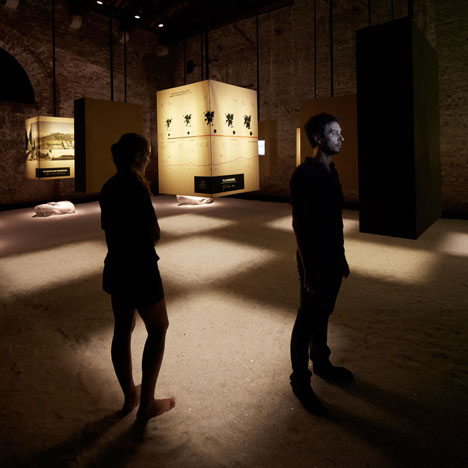
See all our stories about the biennale, including the Russian Pavilion covered in QR codes and the Dutch Pavilion with constantly changing spaces.
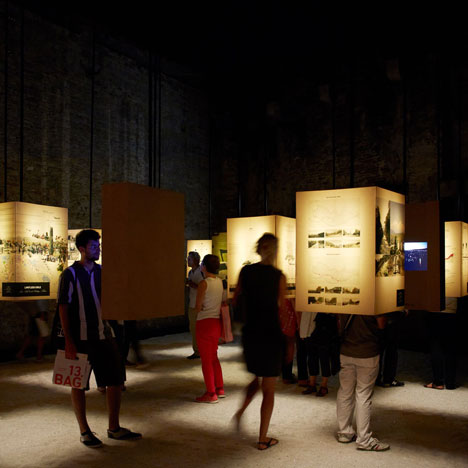
Photography is by Cristobal Palma.
Teasers from Palma's movies follow below, with project captions from the exhibition:
Deserta by Pedro Alonso: "The constant mutation of a territory traced by the human interventions of ground exploitation reveals from the apparent emptiness of the Atacama Desert."
Metropolitan Promenade by Alejandro Arevena, Elemental: "An urban scale public space as a tool to build social equality in Santiago de Chile"
Limitless Chile by Juan Pablo Corvalán, Susuka: "Cancha's spatial conditions begin on its boundaries, just like a country. By using the traditional Mexican mural method, they show us a process of delimitation and then the suppression of the country limits, reaching a utopian continent-like country."
Playground by Genaro Cuadros: "By explaining the consequences of property speculation, he lets us understand the fundamentals of the constitution of a country by its ground system with the participation of the State and the individuals."
Kancha by Germán del Sol: "By focusing in the origin of common American space, he takes us out from the colonial structure into Quechuan and pre-Hispanic origins; the spatial matrix that established territories and landscapes with the presence of man."
Travesía of the Amereida by Iván Ivelic: "Through the method used in the School of Architecture of the Universidad Católica de Valparaíso, he shows us how the South American continent can be re-comprehended and re-founded."
Performance of a Conquest by Rodrigo Tisi: "A proposal of categorisations of the way that social and political individual bodies conquer the land, through three case studies on Chilean territory."